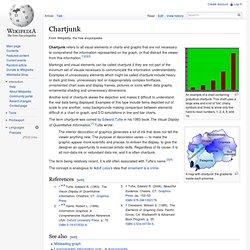

X.509. In cryptography, X.509 is an ITU-T standard for a public key infrastructure (PKI) and Privilege Management Infrastructure (PMI). X.509 specifies, amongst other things, standard formats for public key certificates, certificate revocation lists, attribute certificates, and a certification path validation algorithm. History and usage[edit] X.509 was initially issued on July 3, 1988 and was begun in association with the X.500 standard. It assumes a strict hierarchical system of certificate authorities (CAs) for issuing the certificates.
This contrasts with web of trust models, like PGP, where anyone (not just special CAs) may sign and thus attest to the validity of others' key certificates. Certificates[edit] In the X.509 system, a certification authority issues a certificate binding a public key to a particular distinguished name in the X.500 tradition, or to an alternative name such as an e-mail address or a DNS entry. Emeritus: Definition and Much More from Answers. Animosity: Definition, Synonyms and Much More from Answers. Clout: Definition, Synonyms and Much More from Answers. Concession: Definition, Synonyms and Much More from Answers. Axonometric projection. Axonometric projection is a type of parallel projection used to create a pictorial drawing of an object, where the object is rotated along one or more of its axes relative to the plane of projection.[1] There are three main types of axonometric projection: isometric, dimetric, and trimetric projection.

"Axonometric" means "to measure along axes". Axonometric projection shows an image of an object as viewed from a skew direction in order to reveal more than one side in the same picture. Whereas the term orthographic is sometimes reserved specifically for depictions of objects where the axis or plane of the object is parallel with the projection plane,[2] in axonometric projection the plane or axis of the object is always drawn not parallel to the projection plane. With axonometric projections the scale of distant features is the same as for near features, so such pictures will look distorted, as it is not how our eyes or photography work.
History[edit] References[edit] Jump up ^ Gary R. Chartjunk. An example of a chart containing gratuitous chartjunk.

This chart uses a large area and a lot of "ink" (many symbols and lines) to show only five hard-to-read numbers, 1, 2, 4, 8, and 16. Chartjunk refers to all visual elements in charts and graphs that are not necessary to comprehend the information represented on the graph, or that distract the viewer from this information.[1][2][3] Markings and visual elements can be called chartjunk if they are not part of the minimum set of visuals necessary to communicate the information understandably. Examples of unnecessary elements which might be called chartjunk include heavy or dark grid lines, unnecessary text or inappropriately complex fontfaces, ornamented chart axes and display frames, pictures or icons within data graphs, ornamental shading and unnecessary dimensions.
Another kind of chartjunk skews the depiction and makes it difficult to understand the real data being displayed. A map with chartjunk: the gradients inside each province. Chock-a-block: Definition and Much More from Answers. Adroit: Definition, Synonyms and Much More from Answers. Loansharking: Definition and Much More from Answers. Acquit: Definition, Synonyms and Much More from Answers. Parallel Line Internet Protocol. The Parallel Line Internet Protocol provides Link Layer services for the Internet Protocol, the protocol used for forming small local area networks and large computer networks, such as the Internet, enabling computers without standard dedicated networking hardware, such as Ethernet, but with older parallel port devices, to communicate.

Operation[edit] The Internet Protocol Suite is the standards-based networking model and software specification for forming small and large computer networks, from local area networks to global communication systems, such as the Internet. It is usually implemented by software and hardware features that use Ethernet network interface cards, cabling, and networking switches or hubs. Early personal computers did not have Ethernet hardware included in their design and bus adapters were initially expensive.
A solution to was to use the, at the time, standard parallel port, typically used for connection to a printer or similar output device. Netroots. Netroots is a term coined in 2002 by Jerome Armstrong[1] to describe political activism organized through blogs and other online media, including wikis and social network services. The word is a portmanteau of Internet and grassroots, reflecting the technological innovations that set netroots techniques apart from other forms of political participation. In the United States, the term is used mainly in left-leaning circles.[2]
Uninterruptible power supply. A small free-standing UPS with one IEC 60320 C14 input and three C13 outputs A large datacenter-scale UPS being installed by electricians An uninterruptible power supply, also uninterruptible power source, UPS or battery/flywheel backup, is an electrical apparatus that provides emergency power to a load when the input power source, typically mains power, fails.

A UPS differs from an auxiliary or emergency power system or standby generator in that it will provide near-instantaneous protection from input power interruptions, by supplying energy stored in batteries, supercapacitors, or flywheels. The on-battery runtime of most uninterruptible power sources is relatively short (only a few minutes) but sufficient to start a standby power source or properly shut down the protected equipment. Common power problems[edit] The primary role of any UPS is to provide short-term power when the input power source fails. Postage. English[edit] Pronunciation[edit] Noun[edit] postage (plural postages) Derived terms[edit] Translations[edit] Anagrams[edit]

Barter: Definition and Much More From Answers. Barter is a system of exchange by which goods or services are directly exchanged for other goods or services without using a medium of exchange, such as money.[1] It is usually bilateral, but may be multilateral, and usually exists parallel to monetary systems in most developed countries, though to a very limited extent.

Barter usually replaces money as the method of exchange in times of monetary crisis, such as when the currency may be either unstable (e.g., hyperinflation or deflationary spiral) or simply unavailable for conducting commerce. History An 1874 newspaper illustration from Harper's Weekly, showing a man engaging in barter: offering chickens in exchange for his yearly newspaper subscription. While one-to-one bartering is practised between individuals and businesses on an informal basis, organized barter exchanges have developed to conduct third party bartering. Barter was also used in the colonization of Brazil, since the Indians did not know hard currency.[6][7][8] See also.
Retroactive: Definition and Much More From Answers. Anglophile: Definition and Much More From Answers. Pyrrhic victory: Definition and Much More From Answers. Diacritic. In orthography and collation, a letter modified by a diacritic may be treated either as a new, distinct letter or as a letter–diacritic combination.

This varies from language to language, and may vary from case to case within a language. In some cases, letters are used as "in-line diacritics" in place of ancillary glyphs, because they modify the sound of the letter preceding them, as in the case of the "h" in English "sh" and "th".[1] Types[edit] Among the types of diacritic used in alphabets based on the Latin script are: MECE principle. The MECE principle, pronounced 'me see', mutually exclusive and collectively exhaustive, is a grouping principle for separating a set of items into subsets, the choice of subsets should be mutually exclusive and collectively exhaustive.[1] The MECE principle is useful in the business mapping process where the optimum arrangement of information is exhaustive and does not double count at any level of the hierarchy.

Examples of MECE arrangements include categorizing people by year of birth (assuming all years are known). A non-MECE example would be categorization by nationality, because nationalities are neither mutually exclusive (some people have dual nationality) nor collectively exhaustive (some people have none). The McKinsey Way[edit] The principle as interpreted by Sam Test Cauthen[2] is one of the foci of a series of three books about McKinsey & Company: The McKinsey Way,[3] The McKinsey Mind,[4] and The McKinsey Engagement.[5]
Postmortem. Solipsism. Solipsism ( i/ˈsɒlɨpsɪzəm/; from Latin solus, meaning "alone", and ipse, meaning "self")[1] is the philosophical idea that only one's own mind is sure to exist.

As an epistemological position, solipsism holds that knowledge of anything outside one's own mind is unsure; the external world and other minds cannot be known and might not exist outside the mind. As a metaphysical position, solipsism goes further to the conclusion that the world and other minds do not exist. Value judgment: Definition and Much More From Answers. A value judgment is a judgment of the rightness or wrongness of something, or of the usefulness of something, based on a comparison or other relativity.

As a generalization, a value judgment can refer to a judgment based upon a particular set of values or on a particular value system. A related meaning of value judgment is an expedient evaluation based upon limited information at hand, an evaluation undertaken because a decision must be made on short notice. Explanation The term value judgment can be used objectively to refer to any injunction that implies an obligation to carry out an act, implicitly involving the terms "ought" or "should".
Ideate: Definition and Much More From Answers. Snare: Definition, Synonyms and Much More From Answers. Ignoramus: Definition and Much More From Answers. Dichotomy: Definition and Much More From Answers. Spindle. The term spindle may refer to: Textiles and manufacturing[edit] Computing[edit] Biology[edit] Spindle apparatus, a cellular structure organizing and separating the chromosomes during cell divisionMuscle spindle, a specialized innervated muscle structure involved in the reflex action and in proprioceptionSpindle neurons are a specific class of neurons that participate in signal transmission in the nervous systemSleep spindle, an EEG waveform that occurs during sleepThe genus Euonymus (also called spindles) are deciduous and evergreen shrubs and small trees.
Laver: Definition and Much More From Answers. Oligopoly: Definition and Much More From Answers. An oligopoly is a market form in which a market or industry is dominated by a small number of sellers (oligopolists). [citation needed] A general lack of competition can lead to higher costs for consumers. [1] Because there are few sellers, each oligopolist is likely to be aware of the actions of the others. The decisions of one firm influence, and are influenced by, the decisions of other firms.
Strategic planning by oligopolists needs to take into account the likely responses of the other market participants. Etymology The word is derived, by analogy with "monopoly", from the Greek ὀλίγοι (oligoi) "few" + πωλεῖν (polein) "to sell". Description Oligopoly is a common market form. Culminate: Definition, Synonyms and Much More From Answers. Dansk (Danish) v. intr. - kulminerev. tr. - bringe til kulmination Nederlands (Dutch) culmineren Français (French)v. intr. - atteindre son plus haut point, (Astron) culminerv. tr. - atteindre son plus haut point, (Astron) culminer Deutsch (German)v. - kulminieren Ελληνική (Greek)v. - (αστρον.) μεσουρανώ, (μτφ.) αποκορυφώνομαι Italiano (Italian)culminare Português (Portuguese)v. - culminar Русский (Russian)достигать апогея.
Reimburse: Definition, Synonyms and Much More From Answers. Confabulate: Definition, Synonyms and Much More From Answers. Crepuscule: Definition and Much More From Answers. Quality Gate. Flyleaf: Definition and Much More From Answers. 稟議とは ~ exBuzzwords用語解説. Hyperbole: Definition, Synonyms and Much More From Answers. Dansk (Danish) n. - overdrivelse, hyperbol, bevidst overdrivelse Nederlands (Dutch) literaire overdrijving Français (French)n. - hyperbole. Rile: Definition, Synonyms and Much More From Answers. Kibosh: Definition and Much More From Answers.
Dovetail: Definition, Synonyms and Much More From Answers. Dansk (Danish) n. - tapsamling, tapv. tr. - tapsamle, passe ind i hinanden, få til at glide naturligt over iv. intr. - passe ind i hinanden, gå naturligt over i. Panzerfaust. The Panzerfaust (lit. Flounder: Definition, Synonyms and Much More From Answers. Agnostic: Definition and Much More From Answers.
Ceres: Definition and Much More From Answers. Ceres, minor-planet designation 1 Ceres, is the only dwarf planet in the inner Solar System, and the largest asteroid.[19][20][21] It is a rock–ice body 950 km (590 mi) in diameter, and though the smallest identified dwarf planet, it constitutes a third of the mass of the asteroid belt.[22][23] Discovered on 1 January 1801 by Giuseppe Piazzi,[24] it was the first asteroid to be identified, though it was classified as a planet at the time.[25] It is named after Ceres, the Roman goddess of growing plants, the harvest, and motherly love. Poseur: Definition and Much More From Answers. コトノハ.